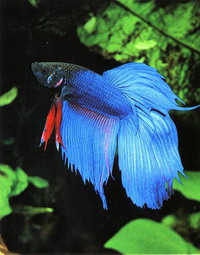Login form
Fish
 What kind of animal can live in hot desert spring water or in the freezing water of the Antarctic? What animal can live in a shallow mud pond or the deepest part of the sea? Fish can. Antarctic icefish can live in water below 32° Fahrenheit (0° Celsius). Desert pupfish can live in water that is hotter than 100° Fahrenheit (40° Celsius).
What kind of animal can live in hot desert spring water or in the freezing water of the Antarctic? What animal can live in a shallow mud pond or the deepest part of the sea? Fish can. Antarctic icefish can live in water below 32° Fahrenheit (0° Celsius). Desert pupfish can live in water that is hotter than 100° Fahrenheit (40° Celsius).
Fish are animals that live and breathe in water. Some fish live in the fresh water of lakes and streams. Some fish live in the salt water of oceans. A few fish can live in both kinds of water.
All fishes are vertebrates (animals with backbones). Most fish have a covering of scales to protect their bodies.
KINDS OF FISH
There are about 25,000 species (kinds) of fishes. Fish come in all sizes. The huge whale shark can be 40 feet (12 meters) long. The tiny goby is only 0.4 inch (1 centimeter) long.
Most fish are called jawed fish. Hagfish and lampreys are jawless fish. They are more like eels. Eels are fish that look like snakes. Jawless fish do not have fins, scales, or jaws with teeth.
All other fish have jaws. There are bony jawed fish and cartilaginous jawed fish. Bony fish have skeletons made of bone. Cartilaginous fish have a softer material called cartilage instead of bone. Sharks, rays, and chimaeras are cartilaginous fish.
HOW FISH SWIM
Most fish use their side, back, and tail fins for swimming. Fins are movable, fanlike parts. A fish moves through the water by swinging its tail fins back and forth. A fish uses its other fins to steer and to stop. Sometimes the other fins also help it go fast through the water.
Most fishes have bodies shaped like a torpedo. Their bodies are pointed at the head and at the tail. This streamlined body helps fish speed through water. Sailfish can swim as fast as 70 miles per hour (110 kilometers per hour).
Some fish have unusual shapes. Rays have flat, disc-shaped bodies. Large fins like wings go out from a ray’s head. To swim, rays flap the fins.
Most fish also have swim bladders. They fill their swim bladders with air. Their air-filled swim bladders act like life jackets. They keep the fish from sinking to the bottom.
HOW FISH BREATHE
You have lungs for breathing. Most fish have gills for breathing. Gills have thin tubes that carry blood. As water goes into a fish’s mouth it passes over the gills. The gills take oxygen out of the water. All animals must have oxygen to live. Blood in the gills picks up the oxygen and takes it everywhere in the fish’s body. A waste gas called carbon dioxide also goes out of the fish’s body through the gills.
The lungfish can breathe air. Most lungfishes rise to the water’s surface to breathe. Some get oxygen from the water.
FISH SENSES
Fish have a great sense of smell. They use their sense of smell to find food. Most fish can see. Fish that live at the bottom of the sea in total darkness cannot see. Some do not have eyes.
Fish can also feel things in the water around them. They can feel things before they can see them. They can tell if a big, dangerous fish that might eat them is coming near.
Minnows can tell when another minnow is being attacked. The skin of the minnow in danger gives off a chemical. The chemical warns other minnows to escape. Skin chemicals also help fish swim in groups called schools. By sensing skin chemicals, the fish in a school can all turn, stop, or swim away at one time.
WHAT FISH EAT
Most fish eat meat. Some eat tiny plants. Sharks and other big fish eat smaller fish. Some sharks eat seals.
Some fish have large, sharp teeth. Sharks and other big fish grab their prey and bite it. Other fish suck prey into their mouths and use smaller teeth to grind them up.
Some fish do not have teeth. Their mouths sift tiny plants and animals from the water. In the deep ocean where sunlight never reaches, the bodies of some fishes have chemicals that make a glowing light to attract prey.
HOW FISH REPRODUCE
Female fish lay eggs. Most kinds of female fish lay their eggs right in the water. Males fertilize the eggs. Some fish lay their eggs in nests on the bottom of a lake or ocean and guard the nests.
Some male and female fish mate. Female guppies and sharks keep the eggs in their bodies until the baby fish hatch. Female pipefish and sea horses give the eggs to the male to take care of.
FISH AND PEOPLE
Fish are very important to people. People all over the world eat fish. People catch fish to sell. They catch fish for sport. You can keep fish as pets.
In some parts of the ocean, people are catching too many fish. In some lakes and rivers, pollution kills fish. Governments pass laws to limit fishing and clean up polluted water. These laws help keep fish from disappearing.
Source: Microsoft ® Encarta

